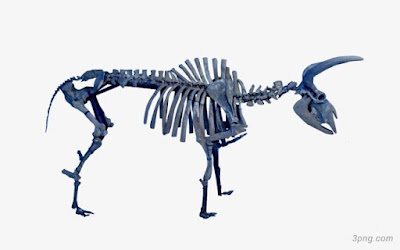I have dubbed the skeleton above "the Jilin aurochs". It is the skeleton of a female, found in Gan'an County in 1998, and dated to between 10,000 and 20,000 years ago. It is held at the Jilin Museum in Changchun, China. Another view of the Jilin Aurochs When I first saw this skeleton, I was immediately struck by how strange looking it is. The skull in particular has a very unusual character, it certainly doesn't look like any typical aurochs skull you would see in a western European museum. Through the magic of Google, I was able to find some more pictures of Chinese aurochs fossil material, and many of the skulls show showed the same unusual features as that of the Jilin aurochs. I wondered whether or not the apparent distinctiveness of these Chinese skulls was just an illusion, or if it had in fact been noted before, either in the literature or through the naming of separate subspecies. Well as it turns out, there have been aurochs subspecies



